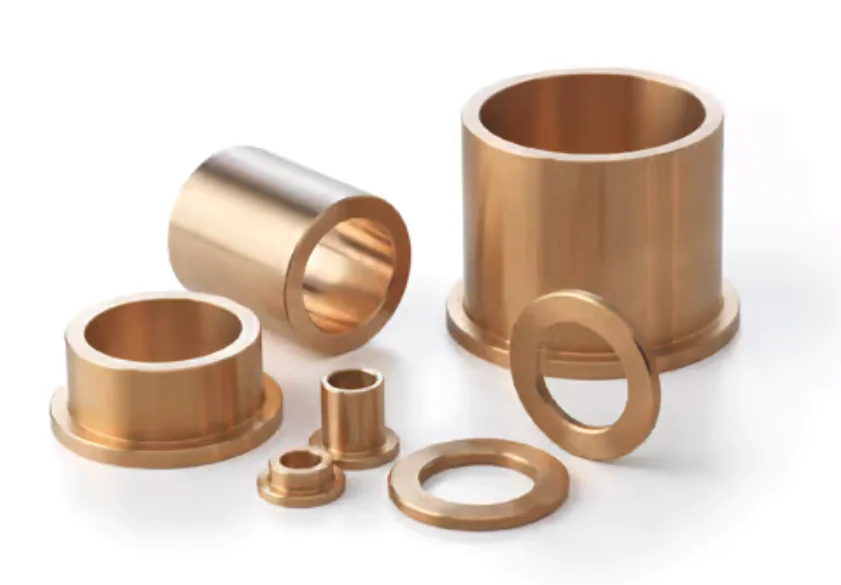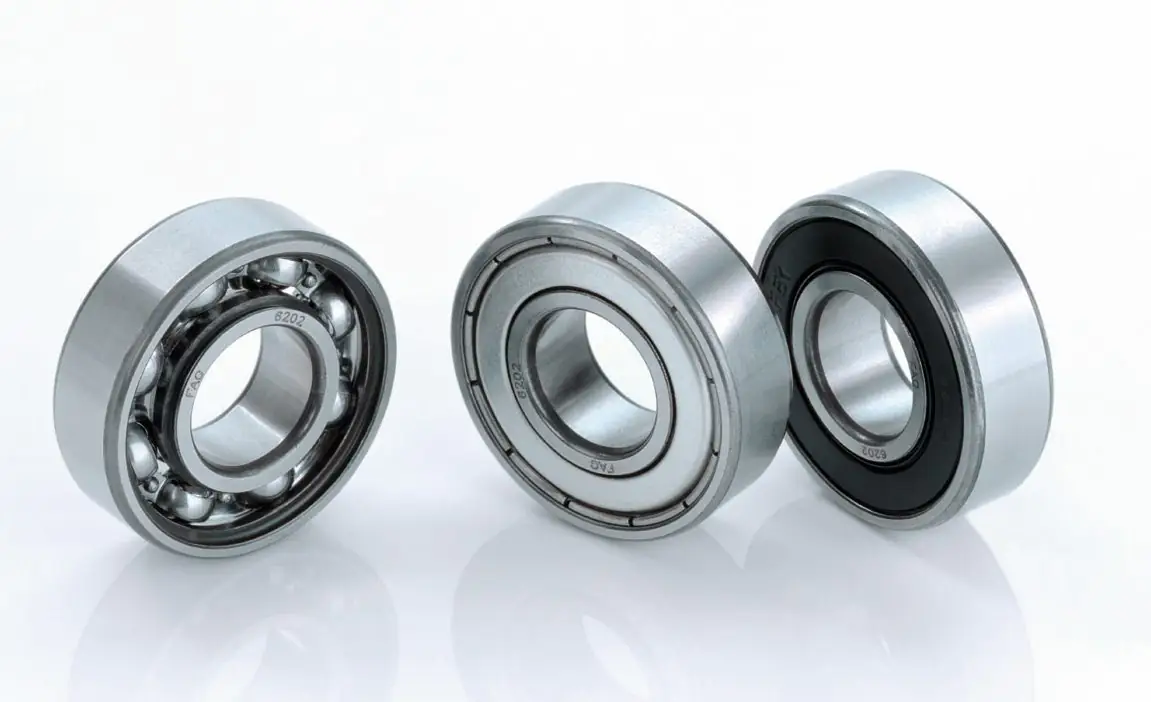
Difference Between Bushings and Bearings
Technically a bushing is a type of bearing. Plain bearings, sleeve bearings, journal bearings and bushings are considered the same thing for practical purposes. Bushings, sleeve, plain and journal bearings are known as friction bearings.
Friction bearing consists of a fixed, non-moving bearing surfaces, such as a pressed-in bushing, that provides a low-friction support surface for rotating or sliding surfaces. Friction bearings commonly use lubricating oil to separate the moving component from the mated non-moving bearing surface.
Design Engineers often specify oil-impregnated bronze for applications in all types of industrial equipment. Applications include Construction and Agricultural, Office, Fitness, Marine, Aerospace, Food Processing, & Material Handling Equipment.
Sintered Bronze Impregnated with Synthetic Performance Difference™ AM1-SPD™
Temp Range -35°F to +300°F

Bronze bushings both flanged and non-flanged
Naturally, there are many other materials that are available in today’s commercial markets.
Bushings can be manufactured from bronze metallic alloys, brass, nylon, and other exotic materials with different characteristics to be considered in design and application.
The P factor for sleeve bearings( bushings) measures performance capabilities with respect to load (P) and surface speed (V) of the shaft. Bearings made of different materials have different P factors- the higher P factor indicates the bearing has a higher load and speed rating. Load and speed requirements of a particular bearing application are used to calculate the P value which is then used to determine the suitability of various bearing materials. Load Pressure (P) is calculated from the bearing load and the projected area of the bearing. Here the projected area equals the inside diameter of the bearing times the length of the bearing. Bearing lengths generally vary from 1 to 2 times the inside diameter of the bearing.
- P=Load(lb)/Projected area (in)= Load(lb)/Bearing idx length
- Velocity (V) is calculated from the rpm and circumference of the shaft
- V=rpm x circumference
- V=rpm x B x shaft dia(in) x 1 ft/12 in=rpm x 1ftx3.1416 xD (in)/12 in
- V=0.2618 x rpm x shaft dia.
- Where the shaft diameter is given in inches and V is in ft/min
- When P and V values are combined, the diameter of the shaft/ bearing I.D. cancel out of the equation
- PV=Load(lb)/ Bearing ID xBrng length x 0.2618 x rpm x shaft dia.
- PV= Load (lb)/Brng length x 0.2618x rpm
Notice that as bearing length increases the value of P decreases.
To see different material comparisons.
Plain bushings are specified for use where space limitations do not allow for a ball or roller bearing to fit. Usually, bushings work at lower speeds and can accommodate higher loads.
They are broadly divided into radial bearings, thrust bearings and linear bearings, depending on whether they’re working with rotational or linear movements.
A “bushing” is a specific design of bearing used for certain applications.
Bearings employ a rolling element and consist of many components primarily an inner and outer race, balls or rollers, a retainer, seals and shields and grease or oil. Bushings are suitable for rotating, oscillating and linear movements, whereas straight (cylindrical) bushings can accommodate radial loads only and flanged bushings can accommodate radial and axial loads in one direction.
Ball and roller bearings employ a rolling element and have other components reducing friction and improving life and function. Ball and roller bearings offer more diverse application solutions than do sleeve or journal bearings The major points we will encounter over and over when dealing with bearings are bearing material, wear, bearing service life, coefficient of friction, contact pressure, lubricating film, bearing rings, bearing bushings, bearing clearance, sealing , axle, shaft, loose wheel, fixed wheel, wheelset.
The advancement of bearings, bearing materials and lubricants took place over centuries in small incremental steps. For a long time, wood was the preferred bearing material for wheels, axels, shafts, bearing bushings and bearing journals for all types of applications such as wheels in vehicles and windmills, water wheels, potter wheels and some early industrial machinery. In sleeve or journal bearings water was used to provide lubrication in stationary plants. In vehicles friction and wear were reduced using animal fats to increase service life.
The improvements in lubrication, bearing manufacturing, materials caused sleeve and or journal bearings to give way to the much improved ball and roller bearing in many applications.
Final thoughts
A bushing is a bearing, but a bearing is not always a bushing. Bearings are anti-friction by their very nature and bushings are not. Bushing overcomes friction or reduces friction with lubrication and bearings overcome friction with a rolling element and lubrication.
Go to www.pibsales.com to see the array of both friction and anti-friction bearings and bushings.

